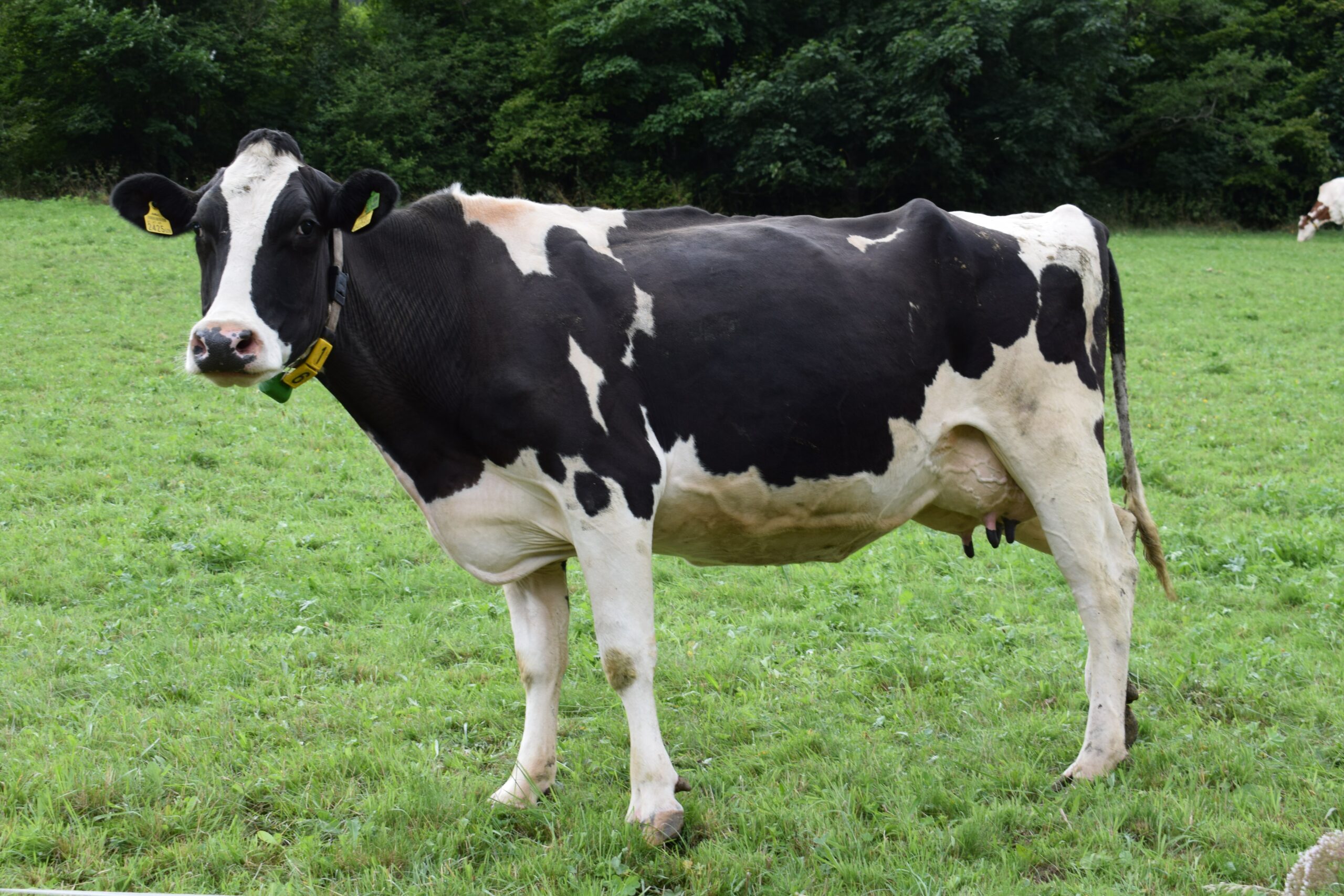Cows, belonging to the animal kingdom, class Mammalia, and order Artiodactyla, are iconic creatures that have played a varied and significant role in human civilization for centuries. Cows hold significant places in some religions while being minimized in other parts of the world.
However you view cows, they are worthy to explore and learn more. Cows encompass both domesticated and wild species, each with distinct characteristics and adaptations.
The domestic cow, scientifically known as Bos taurus, is one of the most important and widely distributed livestock animals. They have a large, sturdy body, with females (cows) generally being larger than males (bulls). Cows possess a characteristic hump on their shoulders and long, curved horns. They have a docile temperament and are herbivorous animals, primarily consuming plant material.
The wild ancestor of domestic cows is the Aurochs (Bos primigenius), which is now extinct. While true wild cows no longer exist, some semi-wild populations, such as the Chillingham Cattle in England, have retained some of the characteristics of their wild ancestors. These populations are managed in conservation areas and exhibit more primitive traits compared to their domestic counterparts. However, there are wild species that are part of the larger Bovidae family.
Types of Cows:
Cows are found around the world with different characteristics leading many to ask the question, how many breeds of cows are there? What are the most common or popular types of cows? There are over 1,000 cow breeds worldwide, each selectively bred for specific purposes such as milk production, meat quality, or adaptation to particular environments. Here are common breeds for both domestic and wild bovine species.
Domestic Bovidae Species
- Holstein: Holsteins are the most prevalent dairy cow breed, known for their high milk production. They have distinctive black-and-white or red-and-white markings on their coats.
- Angus: Angus cows, originally from Scotland, are one of the most popular beef cattle breeds. They are known for their excellent meat quality and adaptability to various climates.
- Hereford: Herefords are another popular beef breed, known for their docile nature, hardiness, and ability to thrive on grass.
- Jersey: Jersey cows are a smaller breed but are highly valued for their rich and creamy milk, which is ideal for making butter and cheese.
- Brahman: Brahman cows, originating from India, are well-adapted to hot and humid climates. They have distinctive humps and droopy ears, making them suitable for meat production and as working animals.
Wild Bovidae Species:
There are several wild species that are part of the larger Bovidae family. Here are some of the more popular species:
Bison: Bison, also known as American buffalo, are large, iconic bovines native to North America. They have a robust build, a hump on their shoulders, and impressive curved horns. They are well-adapted to survive in harsh environments.
- Banteng: Banteng are wild cattle found in Southeast Asia. They have a dark brown coat, white lower legs, and impressive curved horns. Banteng are known for their elusive nature and inhabit forests and grasslands.
- Bison: Bison, also known as American buffalo, are large, iconic bovines native to North America. They have a robust build, a hump on their shoulders, and impressive curved horns. Bison have a shaggy, dark brown coat that helps them withstand harsh weather conditions. They are known for their resilience and have played a significant role in North American history and culture.
- Cape Buffalo: Cape buffalo, also known as African buffalo, are powerful and formidable bovines found in sub-Saharan Africa. They have a robust build, a dark brown coat, and large, curved horns. They are known for their aggressive behavior and herding tendencies.
- Gaur: Gaur, also called Indian bison, are the largest wild bovine species. They have a muscular build, dark brown or black coat, and distinctive curved horns. Gaurs inhabit forested areas in Southeast Asia and are known for their strength and endurance.
- Water Buffalo: Water buffalo, native to Asia, are domesticated bovines used for various purposes. They have a large, sturdy build, a long, curved horn, and a thick black or gray coat. Water buffalo are well-adapted to wet environments and are often used for draught work and milk production.
- Yak: Yaks are robust bovines native to the Himalayan region of Asia. They have long, shaggy hair, curved horns, and a hump on their shoulders. Yaks are well-suited for high-altitude environments and are used for milk, meat, and transportation in mountainous areas.
What are cows known for?
Cows possess several distinctive characteristics and behaviors:
- Gentle Nature: Cows are generally known for their calm and gentle demeanor, making them relatively easy to handle and work with.
- Social Animals: Cows are social animals and form strong bonds with other members of their herd. They engage in social behaviors such as grooming, mutual licking, and communication through vocalizations and body language.
- Ruminant Digestion: Cows have a unique digestive system called “ruminant digestion.” They have a specialized stomach with four compartments that allow them to efficiently digest and extract nutrients from fibrous plant material.
- Sacred and Cultural Symbolism: Cows hold cultural and religious significance in various societies. They are revered in some cultures and play important roles in religious rituals and traditions.
Summary
Cows, both domestic and wild, are remarkable animals that have been essential to human existence for centuries. Their diverse breeds, adaptability, and contributions to food production make them invaluable.
Whether it is for milk, meat, work, or companionship, cows have shaped human culture, sustenance, and our connection to the animal kingdom.
As we appreciate their beauty, gentleness, and utility, let us also recognize the importance of responsible husbandry practices and the ethical treatment of these magnificent creatures.



































































